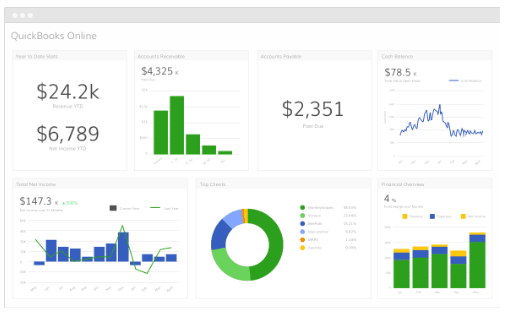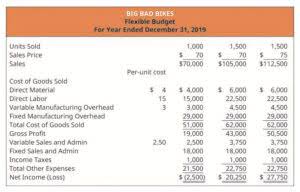
Office rent, managerial salaries, and property taxes stay the same, no matter what. Sales revenue is the income received by a company from its sales of goods or the provision of services. Fixed cost is the same cost in total regardless of the quantity produced, used, or sold but the per-unit cost changes depending on the quantity produced, used, or sold. In an effort to isolate the problem, the CFO asked for segmented income reporting by division. We’ll next calculate the contribution margin and CM ratio in each of the projected periods in the final step.
- Meanwhile, variable expenses include raw materials, commissions, loan interest, etc.
- Gross margin is a standardized measure under GAAP and IFRS, making it useful for comparing profitability across companies and industries.
- For example, a multi-product company can measure profitability of each product by preparing a product viz contribution margin income statement and decide which product to continue and which one to drop.
- It considers the sales revenue of a product minus the variable costs (i.e., costs that change depending on how much you sell), like materials and sales commissions.
- By incorporating contribution margin insights into the decision-making process, finance professionals better understand how different aspects of the business contribute to overall profitability.
Relevance for Different Cost Structures
- Tickmark, Inc. and its affiliates do not provide legal, tax or accounting advice.
- Calculating the contribution margin involves subtracting total variable costs from total sales revenue.
- For instance, if the plastics segment of a business closes down, the salary of the manager of that segment probably is eliminated.
- Variable costs fluctuate with production volume, such as raw materials, direct labor, and sales commissions.
- Recall that Building Blocks of Managerial Accounting explained the characteristics of fixed and variable costs and introduced the basics of cost behavior.
- Once you get your final figure, managers look for patterns to inform strategies with confidence.
The most common error in calculating the effect of changes in sales quantity on net operating income is using the sales price instead of the contribution margin. To illustrate, refer to the data for Kinsley’s Concepts presented in https://chillcart.co/2021/10/22/understanding-accrual-to-cash-conversions-2/ Exhibit 4-1. A common mistake is to assume that net income would increase by the sales price or $240.

Contribution Margin Income Statements

Some companies would allocate the entire cost of the advertisement to Segment M because it was responsible for incurring the advertising expense. This format helps external users see how much of the revenues are dedicated to variable-costs and the amount of fixed-costs that the company is committed to. In fact, Coca Cola’s assembly line only requires one employee to run the filling station that fills more than 2,000 soda cans a minute.
What is a Contribution Format Income Statement?

You don’t need to spend this money to create the product, but it is still included in the cost of making a sale. Every dollar of revenue generated goes into Contribution Margin or Variable Costs. What’s left in the contribution margin covers Fixed Costs and remains in the Net Profit / income summary Loss. With such information, the business can plan on what to do with such expenses. Another example, there would be no cost of goods sold if there are no sales. This is particularly useful when assessing whether a product, service, or segment is profitable.
Easier to understand the effect of changes in the level of activity

For example, a multi-product company can measure profitability of each product by preparing a product viz contribution margin income statement and decide which product to continue and which one to drop. Companies are not required to present such statements to any external party, so there is no need contribution margin statement to follow GAAP or IAS. For that, you’ll need a tool that automates data collection, accurately calculates financial insights, and produces customizable reports. Request a free demo and see how Cube can help you save time with all your contribution margin income statements, reports, analysis, and planning.
The concept of this equation relies on the difference between fixed and variable costs. Fixed costs are production costs that remain the same as production efforts increase. However, ink pen production will be impossible without the manufacturing machine, which comes at a fixed cost of $10,000. The cost of the machine represents a fixed cost (and not a variable cost) as its charges do not increase based on the units produced. Such fixed costs are not considered in the contribution margin calculations. You can’t directly calculate the contribution margin from the EBIT figure, without a breakdown of the fixed and variable costs for each product or service.


